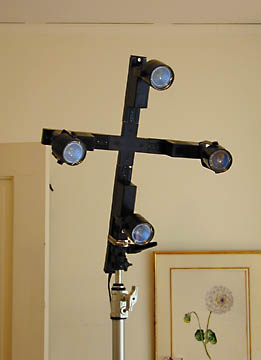September 200X Volume 22 Number 3
![]()
![]()
September 200X Volume 22 Number 3
If you want to remove residue, dust, oil, or finger prints from non-porous surfaces of artifacts, such as watch movements, jewelry or the like, consider the following: two Swiss companies have developed putties that can be used effectively for more than just the cleaning of mechanical parts of watches. “RUB-OFF” from Albert Froidevaux & Fils and “RODICO” from Bergeon & Cie SA. Both are advertised by their manufacturer to be very stable.
The putty works best if a small bead is softened by kneading and pressed onto the dirty surface. Roll it off with a finger immediately afterwards. The same bead can be re-used until the bound dirt begins to change the putty’s color. Accretions from large surfaces as well as from tiny cavities and inaccessible corners can be removed without brushing or scraping.
The consistency and the slight petroleum smell are reminiscent of Silly Putty. The difference is that a strong cohesive force keeps the new putty from smearing. Both products, said to be non-toxic and non-reactive, contain Polyisobutylene polymer as main ingredient. According to the RUB-OFF MSDS, paraffinic oil is used as plasticizer. The rate of migration of this component is slow.
If you have doubts about the amount of oily residue that might be left on a surface, you can carry out a rudimentary test with impressive results: Try rolling the putty over a sheet of glass. There seems to be no visible residue left behind. However, do not forget that these products are designed for the cleaning of non-porous materials only. Removing the putty from a dense surface right after application will reduce the risk of contamination by components like oil or pigment.
I personally prefer the light green colored RODICO to the darker blue RUB-OFF.
It is easier to recognize soiling on the lighter colored cleaning agent. Thus RODICO is likely to be changed more frequently.
One bar of RODICO (about the size of a small cigar) is available for $ 3.50 from RAILROAD WATCH TOOLS, 830 Sheparkon Dr., Midlothian, TX 76065. Phone and Fax: 972-723-8665. Email: info@railroadwatchtools.com.
You can order 2 bars (minimum) of RUB-OFF for $6.50 from FREI & BOREL, P.O. Box 796, 126 Second Street, Oakland, CA 94604. Telephone: 510-832-0355, Email: Info@Ofrei.com.
Thanks to Dietmar Linke, conservator of technical heritage at the Filmmuseum Potsdam, Germany, for sharing his experience with this cleaning agent. If you would like to submit your “tips & tricks” to keep this informative column alive, please call (310) 440-7448 or (even better) email to: agumlich@getty.edu.
The Problem: Controlled drying of excavated wooden objects deposited for several months in refrigerated storage.
The Conditions: Archaeologists had understood the conservator’s practice of keeping damp wooden artifacts “in cold storage” to mean simple refrigeration. Consequently the objects were wrapped in paper towels, placed in polyethylene bags, and put in a refrigerator. The resulting condensation within the bags made the objects extremely moist, softened the wood fibers. caused the paper towels to disintegrate, and encouraged mold growth.
Since the objects were not saturated, it was felt that standard treatments for waterlogged organic materials were not warranted. Nonetheless, controlled moisture removal remained critical to avoid shrinkage and cell collapse.
The Solution: Compressed natural vegetable sponges provided a controlled method for removing the excess moisture. A sponge was placed with each object in a sealed polyethylene bag at ambient temperature. As moisture was taken up, the sponges expanded, providing visual confirmation of moisture absorption, confirmed by weight over time. This system provided the removal of excess water from the objects while simultaneously buffering the micro-environment. It also allowed for the amount of water removed from each object to be quantified. This slow drying process resulted in minimal change in the objects.
The Materials: Sealable polyethylene bags; Trader Joe’s compressed natural vegetable sponges; Scale.
Laramie Hickey-Friedman and Sabrina Carli
I recently built the above inpainting light and felt the specs were worth passing on. It is made from pieces of track cut to about 6” and attached to a central X connector, with track heads at the end of each arm. The power comes from an end feed fitted into the lower arm of the cross. This piece of track was left a bit longer to accommodate the feed and allow room to attach the lamp with a pipe clamp to a tilting clamp, in turn attached to a heavy duty light stand. (Avenger brand, from Samy’s Camera, expensive, but worth it.)
You have to rewire the X connector so that the pieces of track are oriented properly to receive the heads at the far end. But if I could do it, nearly anyone can.
For convenience, I got all the bits from Tailored Lighting Inc. (the Solux people) (716) 328-2170. 4’ Track (more than I needed); X Connector; End Feed W/Cord; 4 MR16 Round LV Track Heads; 4 36 Degree Solux bulbs. It cost $225 and took an hour or two to assemble. You might be able to get better prices elsewhere, however be sure to buy the track heads from Tailored. Theirs are true 12 volt. I compared with another fixture, purportedly but apparently not actually 12 volt, and there was a distinct difference in the color and intensity of the light.
Carolyn Tallent